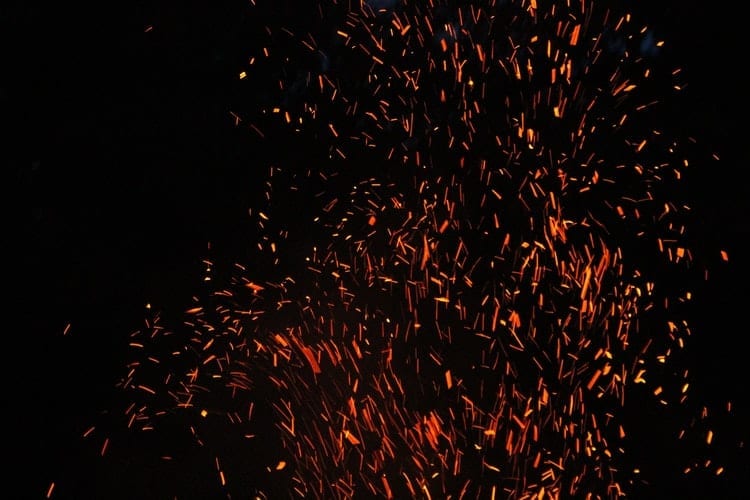Appearance is an attribute which can welcome a number of different pre-conceptions of a person, whether that be their history, interests or racial origin. Often embellishments of the body from clothing to tattoos can provide a welcome means of expressing personal identity. The body we are born with, can, on the other hand, infer conceptions of heritage and collective identity which may be incongruent with the inhabitants own identity. This is something which Dutch poet Simone Atangana Bekono explores with stark and sombre imagery in how the first sparks became visible. Bekono’s epistolary poems thoughtfully discuss displacement between her personal and collective identity in Western society.
Bekono’s debut, originally titled Hoe de eerste vonken zichtbaar waren, won the Poëziedebuutprijs Aan Zee for a best first collection in 2018. The collection is now to be distributed to an English audience through David Colmer’s remarkable translation of the original. Colmer does an exceptional job of translating the direct and confessional tone of Bekono’s writing while managing to maintain her dynamic rhythmic flow.
The poems are labelled with Roman numerals, allowing the audience to form their own understanding of the tonal and thematic identity of each poem. This is unlike the collection’s speaker, who despite being born into society as a tabula rosa in a forest beyond civilization, is subject to a number of projections from her race and gender. Bekono’s allegorical connection between lightness and darkness perfectly displays this dichotomy as the speaker narrates how “My silhouette opened her mouth and said, “I exist because your body exists”.” The projections of her sexual, racial and gender identity predate her as long as her body exists and civilization exists.
The dichotomy of light versus dark is something Bekono uses to explore her racial identity, for in ‘III’ she issues a stark exploration into the systemic racism she experiences as a black woman living in Holland. For readers such as myself, it should make us uncomfortable, forcing us to consider the internalized racism that still prevails in our Western society. The line “I am a version of Kunte Kinte forced into a mould/I feel no bond with my given name” is extremely powerful. It reinforces the displacement she feels as a black woman, as her personal identity is constantly made political. Later in the poem, Bekono lists how “I am a cool afterthought, a drum kit, I am a religious fanatic/ with yellow eyeballs and a hoarse-screamed mouth, I am a court jester” exposing the inherent racism that exists in Western society, and how history dictates her position as an individual in society. Her displacement with this projection is echoed in poem ‘VI’, as she reverberates “All black people don’t exist”.
However, the latter end of the collection takes upon a more personal and less direct tone, as Bekono attempts to make sense of her own words. The poem ‘XI’, for example, reads like a climacteric, attempting to find a connection between the words she has immortalised in her poetry and her personal growth. She writes “I play on the beach/ find bones in the sand and/ all black people identify with drowned people/ I said it now I have to justify it too”, exploring how the poet’s words are always dug up like old relics.
Bekono’s work reads like a collection of stream-of-consciousness that are all disparate despite being interconnected. The result of the collection is a raw, confessional and at times unsettling exploration of identity. how the first sparks became visible is an exceptional debut collection that demands to be seen as an individual.
how the first sparks became visible is set to be released by The Emma Press in January 2021.
Words by Charity Swales
Want more Books content from The Indiependent? Click here
